1st East-West Workshop on Industrial Archaeology
Release Time: 2021-05-20Views:
The “1st East-West Workshop on Industrial Archaeology” was successfully held online on the 10th of May, 2021. The activity was jointly organised by the Institute for Cultural Heritage and History of Science & Technology (ICHHST, University of Science and Technology Beijing), and the UK Association for Industrial Archaeology (AIA) together with its Young Members Board, under the coordination of Dr Juan M. Cano Sanchiz (ICHHST). The workshop was chaired by Dr Dongdong Wang (ICHHST) and technically hosted by Bill Barksfield (AIA). More than 110 people from China, the UK, Brazil, Italy, Germany, Japan, Romania, Portugal, India, Greece and Spain, among other countries, joined the event. The purposes of this new series of workshops are to promote industrial archaeology research and studies in China, and to create a platform to stimulate international cooperation on the subject.
The first’s workshop’s main theme was “Introducing the Archaeology of the Industrial Society”. Dr Cano Sanchiz welcomed the participants and inaugurated the session explaining that this was a very singular activity, since in spite of the abundance of industrial heritage events, there are few international meetings on industrial archaeology. He also explained that the aim of workshop was to exchange ideas and experiences from the East and the West in the field of industrial archaeology, so together we can build a more diverse, rich and complex discipline.
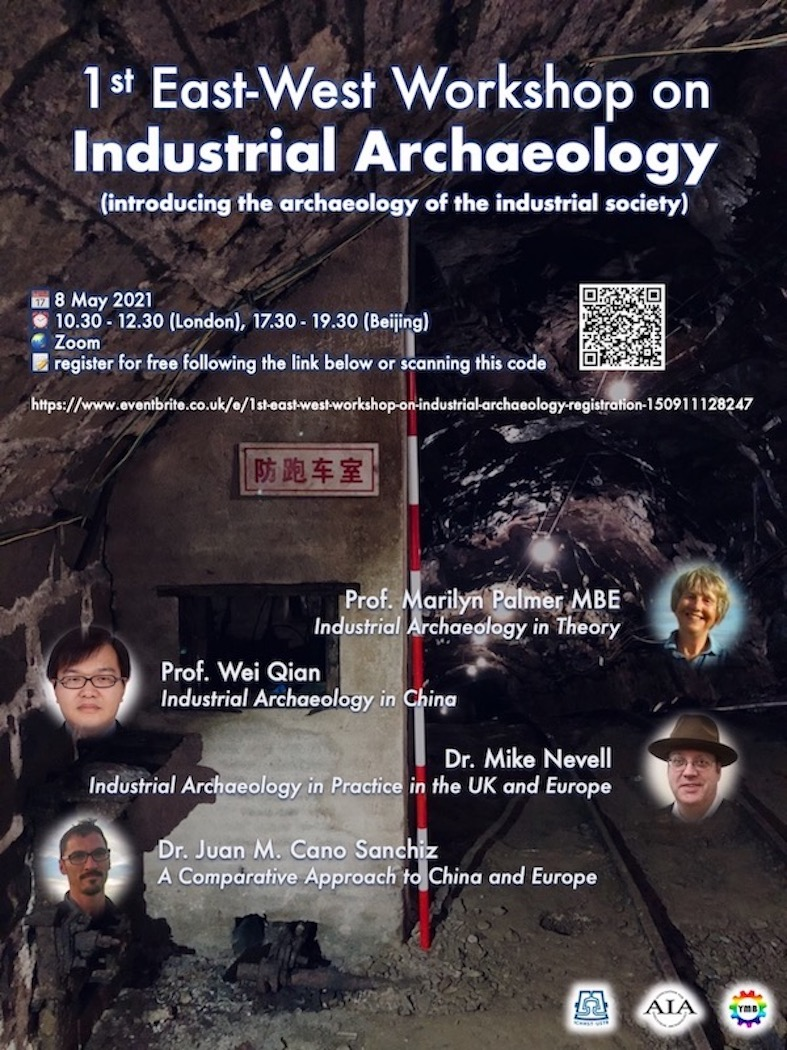
Figure 1: Poster of the activity
Professor Marilyn Palmer (President of the Association for Industrial Archaeology) delivered the speech “Industrial Archaeology in Theory and Practice”. She pointed out that for many years industrial archaeology was practiced without theory, which made the discipline to be descriptive rather than analytical and as a consequence unable to produce historical explanations. This general situation changed in the 1990s and 2000s, when the Association for Industrial Archaeology, together with other institutions and scholars, developed a theoretical framework and a research agenda for industrial archaeology. Palmer introduced the main points of such theories and strategies. In doing so, she explained the framework of inference that modern industrial archaeology follows to produce a cultural explanation of the industrial society grounded on the analytical study of its material culture. Professor Palmer backed her theories with abundant British cases that efficiently illustrated the ideas and lines of work presented.
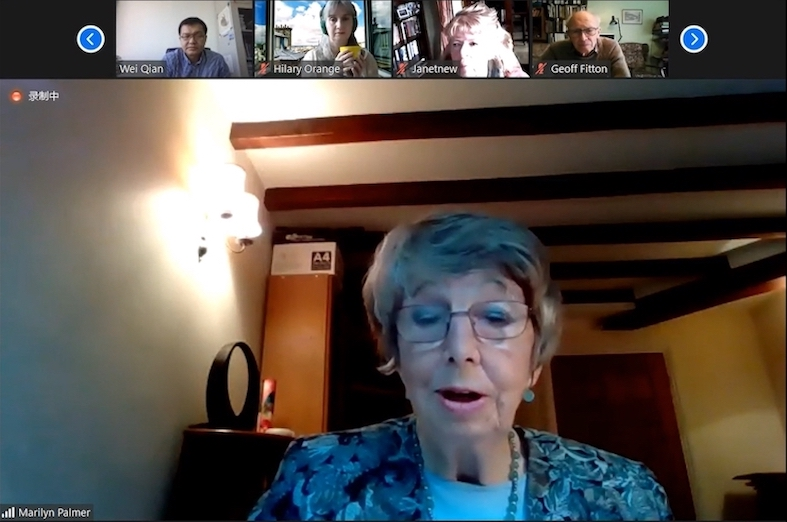
Fig. 2: Professor Palmer’s presentation.
Dr. Michael Nevell (Industrial Heritage Support Officer for England) presented the topic “Industrial Archaeology in Practice in the UK and Europe”, in which he offered a comprehensive view on the practice of the discipline in Europe. His talk included both the archaeological research of the industrial society defended by Palmer, and the involvement of industrial archaeology in the conservation of industrial heritage. On the archaeological side, Nevell introduced some of common methods in industrial archaeology, such as stratigraphic excavations, building surveys, and material analyses. On the heritage side, he presented some UK Industrial World Heritage Sites, as well as the European Route of Industrial Heritage (ERIH). Dr Nevell also talked about the current situation of industrial archaeology in the UK, and the roles of the AIA and the Industrial Heritage Support Office. He concluded defending that, as industrial archaeologists, it is our duty to make the past relevant to the present.
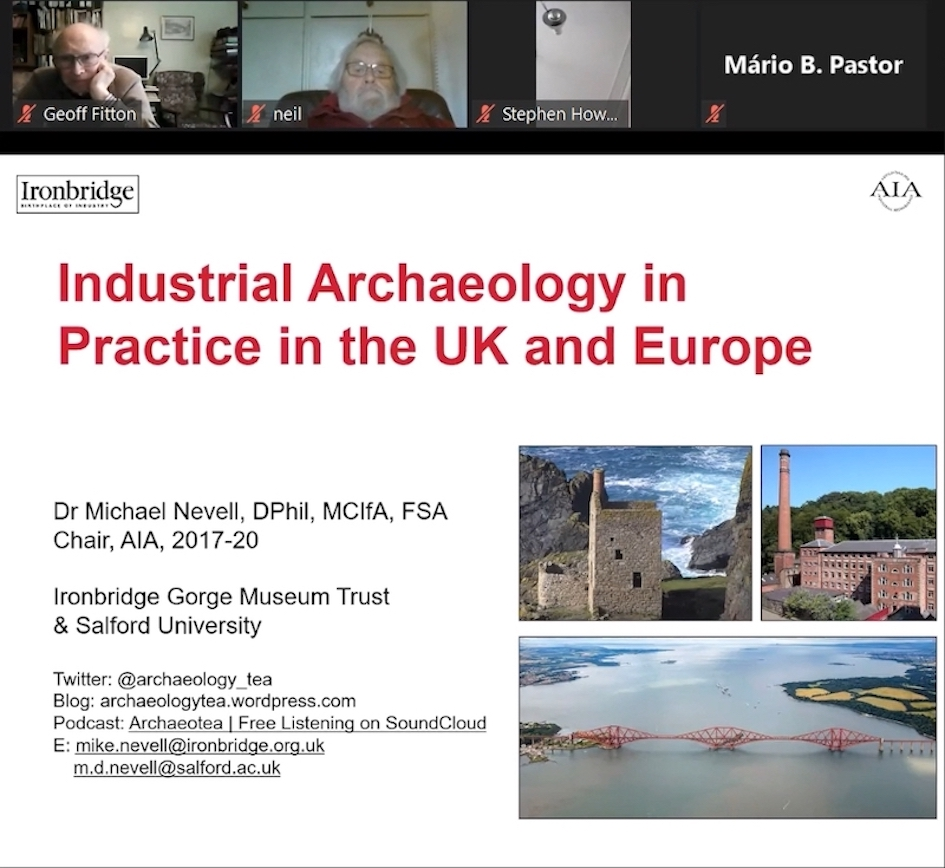
Fig. 3: Dr. Nevell’s talk
In his speech “Industrial Archaeology in China: a Brief Introduction”, professor Wei Qian (Dean of the ICHHST) offered a very comprehensive picture of the understanding and progress of industrial archaeology in China. His talk was divided into three parts. First, he introduced the history of Chinese industrial archaeology presenting the most relevant authors, publications and institutions related to the discipline, which is undeveloped in comparison to industrial heritage. In this sense, Prof. Qian highlighted the efforts made by the ICHHST to promote industrial archaeology, including the teaching of the first master course on industrial archaeology (by Dr. Cano Sanchiz), and the first PhD dissertation to include industrial archaeology in its theoretical and methodological frameworks (defended by Dr. Shujing Feng). Important points of this part of the talk were the inclusion of traditional industries within the scope of industrial archaeology and the importance of the history of technology. Second, professor Qian presented two case studies of Chinese industrial archaeology: Shuiquangou iron smelting site (11th – 13th century) and Wenzhou Alum Mine (14th – 21st centuries). Third, he pointed out the shortcomings of industrial archaeology in China and proposed several ways for strengthening the discipline, such as paying more attention to modern industrial sites, incorporating more archaeologists to the study of the industrial period, offering more courses on industrial archaeology, doing more fieldwork, and fostering more international exchanges.
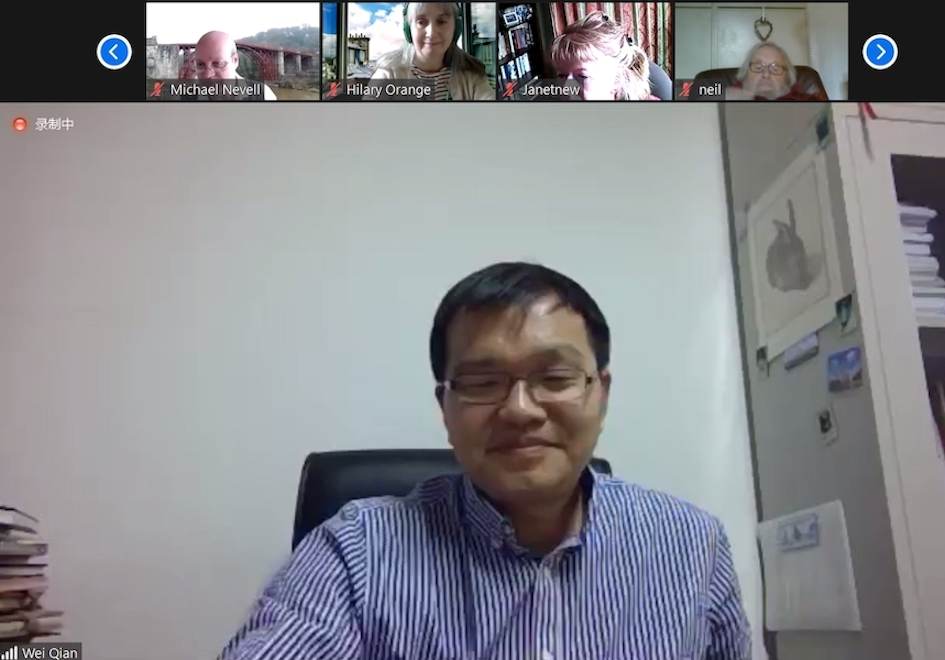
Fig. 4. Prof. Qian’s speech
Dr Juan M. Cano Sanchiz (Associate Professor at the ICHHST) delivered the speech “Industrial Archaeology - A Comparative Approach to China and Europe”. He focused on the materiality of the industrial period and divided his presentation into two parts. First, he compared in general lines the Chinese and British industrialisations in regards of scales, times and international interactions. For example, he compared the beginning and the end of the British and Chinese industrial periods using vectors such as the oldest modern blast furnaces or the latest steam locomotive. Secondly, Dr. Cano Sanchiz presented how the materiality of the industrial period is approached in China. He coincided with prof. Qian and argued that archaeologists in China are normally focused on ancient times and distant pasts, so there are still few examples of proper archaeological investigations of modern industrial sites. He concluded his speech defending the need for developing an archaeology of industrialisation in China, as well as more international cooperation in the field to build a more diverse discipline capable to understand the industrial society in its complex and global nature.
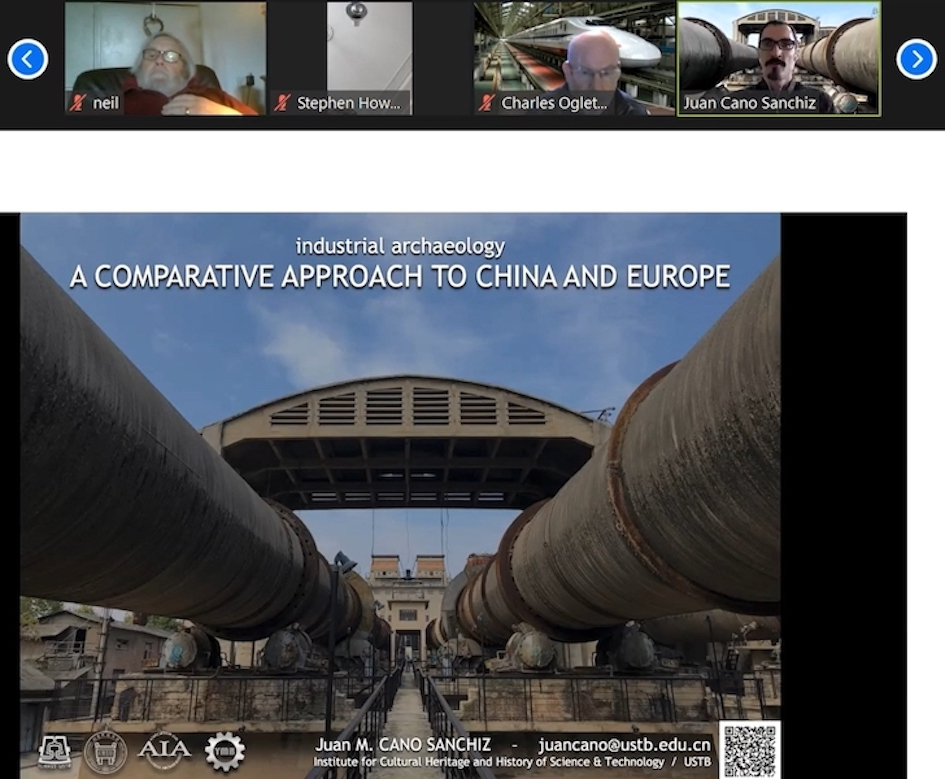
Fig. 5: Dr. Cano Sanchiz’s presentation
Finally, Dr. Dongdong Wang (lecturer at the ICHHST) conducted a discussion section packed with constructive thoughts and reflections based on the presentations, covering topics such as technological overlapping, the contribution of industrial archaeology to the present society, or the need to revise its chronological borders and update its research framework with a more international approach. The workshop demonstrated the complex nature of industrial archaeology and the different ways of understanding it (period / thematic discipline, research / conservation, social archaeology / history of technology, etc.) by bringing together different ideas and practices, which proved to be very enriching and thought provoking, as it was highlighted by many attendees. In short, it can be concluded that the “1st East-West Workshop on Industrial Archaeology” was successful from every point of view and opened several lines of work, discussion and international cooperation. We must have a 2nd edition soon!
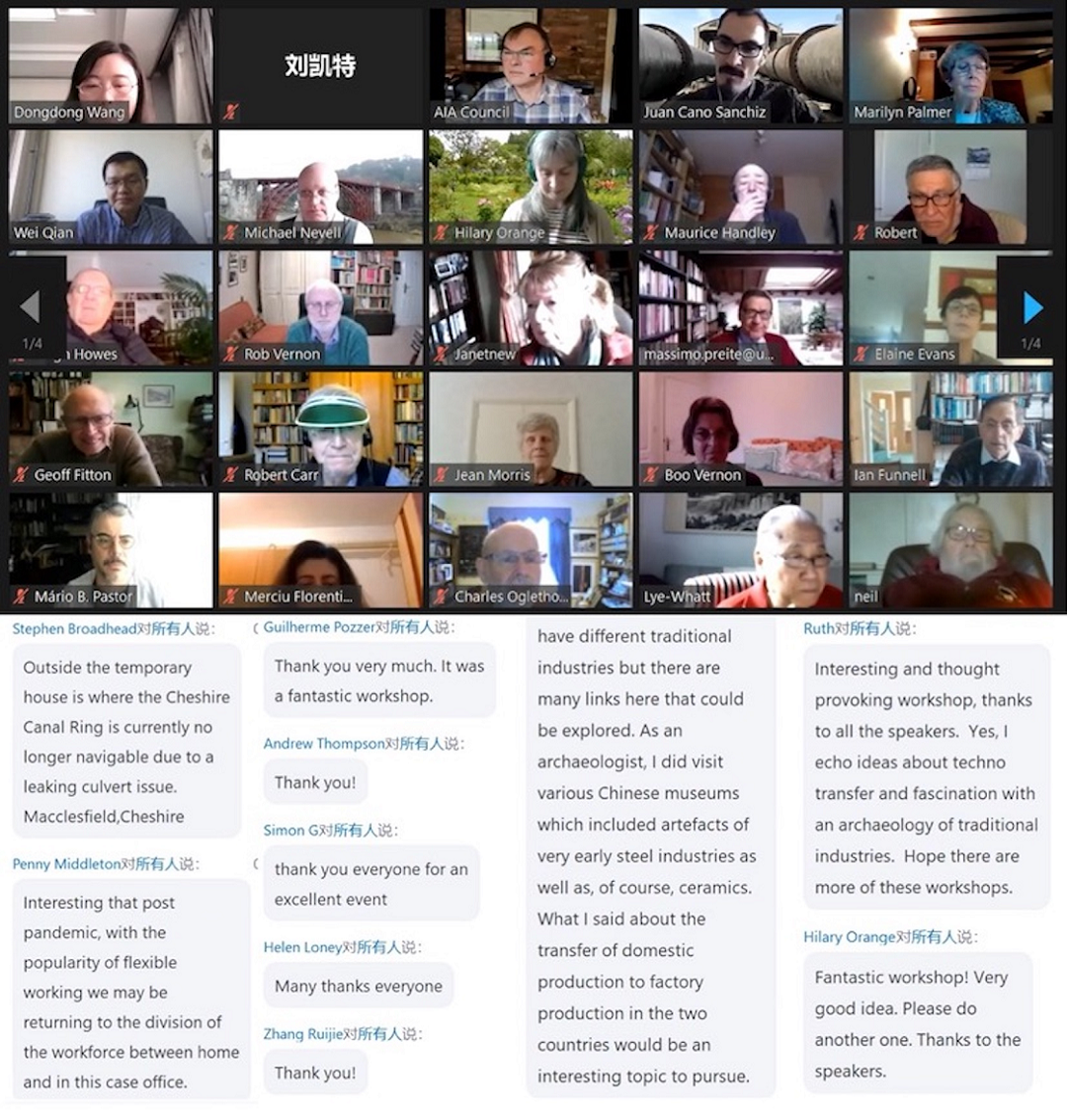
Fig. 6: Debate and some of the many grateful comments sent by the attendees.
Juan Manuel CANO SANCHIZ
Institute for Cultural Heritage and History of Science & Technology
University of Science and Technology Beijing


